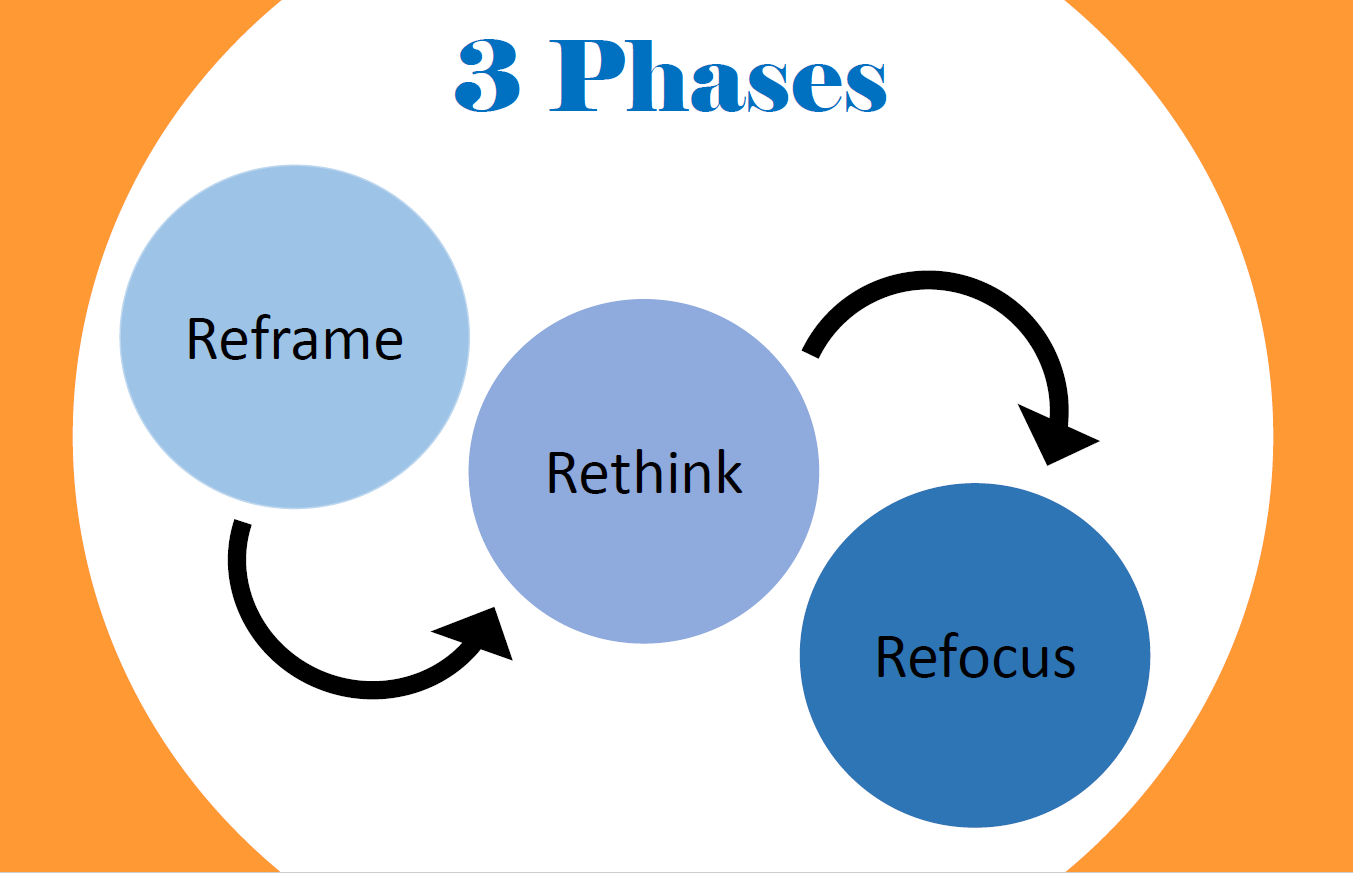How to focus on creating a better business before you start growing your business? This is what Nick Cramp taught in our December 2021 event of the international Powerful Mastermind Club. Nick is a business transformation coach and the author of "Bigger Before Better". He has seen that too often business owners have the default thinking pattern that with every passing year, they need to grow their business, without ever considering that there might be a better alternative. Here's the recap of his presentation.
What got you here might not get you there
It’s important to be mindful of the idea that some things might not be future-fit. For most businesses, there's two outcomes: we either evolve how we operate our offerings andour services, or quite frankly, we become extinct.
To prevent the latter from happening, here's a three-phase approach that Nick recommends:
- Reframe the current situation.
- Rethink given the framing: what you could do more of, what you could do less of, what you could start doing, and what you could stop doing?
- Refocus on what you're going to do differently: how can you prioritize better and actually make the implementation work?

How to reframe?
Reframing is simply looking at a situation from a different viewpoint. We have one view of the world, which is the one that we see in front of us, but other people can be looking at the same situation and see something different. And the danger is as business owners, we get very hooked up on our own view of the world. And we don't take the time to consider what other people are seeing, what other people are experiencing.
So, it’s time to reframe and look at the world from the perspective of other stakeholders.
Commonly for most businesses, the other stakeholders would be customers and clients, employees, contractors, suppliers, and your shareholders. So, the reframing phase is about viewing things from different sides and making sure you're really understanding what the expectation is.
For instance, for a lot of companies where the workforce is tired due to unexpected work load from COVID-19 challenges, a growth strategy where you want to grow another 20% next year just might not be appropriate right now because from their perspective, they're still recovering from the last two years. But from a shareholder's perspective, that might be a good strategy. But unless the employees are on board with it, it is an unachievable strategy.
To talk about growth, we need to talk about resistance.
Steven Pressfield has said: “Resistance is not a peripheral opponent. Resistance arises from within. It is self-generated and self-perpetuated. Resistance is the enemy within.”
So, in companies, a lot of resistances are internally generated. And as leaders, we can sometimes get very fixated on what's happening externally and the challenges that come from there. Where in reality, most of the challenges are internally generated. It is important to focus on what you can control rather than what you can't control.
The three resistance factors:
As Henry Ford famously said: “If I had asked people what they wanted, they would have said faster horses.” But he built a car because that's what people actually needed, they just didn't realize.
So, in 2022, focus on creating a better instead of a bigger business!
Curious to find out more?
Access the full recording and slides from Nick's presentation by logging into our members area HERE.
PS! Don't forget to sign up to our upcoming Powerful Mastermind Club events as each time we have a guest expert presentation on a new topic!
